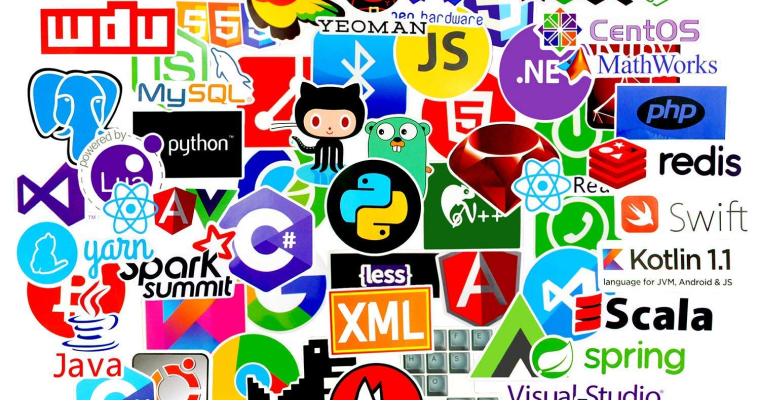As the gaming and entertainment industries continue to push the boundaries of what’s possible in interactive experiences, Epic Games is preparing to unveil Unreal Engine 6 (UE6), the next evolution of the world’s most popular game development platform. While Unreal Engine 5 continues to power blockbuster titles and revolutionize virtual production, Epic is already laying the groundwork for an even more ambitious future.
The Official Word: What Tim Sweeney Revealed
In a revealing interview on the Lex Fridman Podcast, Epic Games CEO Tim Sweeney confirmed that Unreal Engine 6 is in active development, with preview versions expected within two to three years—likely arriving between 2027 and 2028. This announcement marks the first official acknowledgment of UE6’s existence and provides valuable insights into Epic’s strategic vision.

Sweeney emphasized that while there’s no set timeline yet, developers can expect preview builds to become available within this window. Based on typical development cycles, the first games built with UE6 could potentially arrive in late 2028 or early 2029, coinciding with the anticipated launch of next-generation console hardware like the PlayStation 6.
The Core Philosophy: Evolution, Not Revolution
Unlike the dramatic leap from Unreal Engine 4 to UE5—which introduced groundbreaking technologies like Nanite virtualized geometry and Lumen global illumination—UE6 is being positioned as a strategic evolution rather than a complete overhaul.
The primary goal of Unreal Engine 6 is to unify the two divergent development branches that currently exist: the standard Unreal Engine 5 for game developers and the specialized Unreal Editor for Fortnite (UEFN). This fragmentation has resulted in exclusive features and capabilities that aren’t universally available across the platform.
By merging these separate feature sets, UE6 aims to allow for more freedom and developer expression, creating a unified ecosystem where innovations flow seamlessly to all users.
Revolutionary Technical Improvements
Breaking the Single-Thread Barrier
Perhaps the most significant technical advancement coming with UE6 is the fundamental rearchitecting of how the engine handles CPU processing.
Currently, Unreal Engine 5 relies on single-threaded game simulation, meaning that core game logic runs on just one CPU core. This approach, while simpler for developers, creates a massive bottleneck on modern processors that feature 8, 16, or more cores.
Unreal Engine 6 will fundamentally change this by implementing full multithreading support, allowing games to utilize all available CPU cores. This shift represents one of the most significant performance improvements in the engine’s history and should dramatically improve frame rates and simulation complexity in future Unreal Engine games.
The development involves migrating from a legacy single-threaded simulation model to a fully parallel task execution framework, with foundational changes to the engine’s core task scheduler and memory allocation mechanisms.
Modular Architecture for Maximum Flexibility
UE6 introduces a plugin-based modular system that defines a core runtime layer exposing standardized interfaces for rendering, input, audio, and networking. Platform-specific functionality is encapsulated within self-contained modules that can be hot-loaded or replaced without recompiling the entire engine.
This modularization provides several critical advantages:
- Reduced maintenance complexity: Teams can apply targeted updates to individual components
- Simplified deployment workflows: Consistent behavior across hardware configurations
- Enhanced flexibility: Developers can customize their engine builds for specific project needs
- Faster iteration: Changes to one system don’t require rebuilding the entire engine
Supported platforms include Windows, macOS, Linux, PlayStation, Xbox, mobile operating systems, and cloud-based services.
Advanced Rendering Pipeline
The rendering pipeline introduces asynchronous resource loading and streaming, allowing high-fidelity assets to be loaded on demand without interrupting frame updates. GPU-driven culling and hybrid tile-based processing reduce draw call overhead, improving frame rates in complex scenes.
Dynamic global illumination routines have been refactored to leverage task parallelism, distributing light propagation calculations across both CPU and GPU work queues. Shader compilation routines support ahead-of-time (AOT) baking for critical shaders, while less frequently used shaders compile at runtime within isolated worker threads.
These enhancements collectively contribute to consistent frame pacing and lower latency—addressing one of the most common criticisms of current Unreal Engine 5 titles.
Verse: A New Programming Paradigm
One of the most intriguing aspects of UE6 is the deep integration of Verse, Epic’s proprietary programming language that currently powers Fortnite’s creative ecosystem.
Introduced in March 2023 for Unreal Editor for Fortnite (UEFN), Verse is designed to be approachable for beginners while remaining robust for professionals. It complements C++ and Blueprints (UE5’s visual scripting system) by addressing the scalability limitations of Blueprints and the complexity of C++.
Key features of Verse include:
- Declarative design: Variables represent single values, enhancing code predictability
- Static typing: Compile-time checks minimize runtime errors
- Functional logic programming: Reduces common bugs and improves code maintainability
- Accessibility: Lower barrier to entry for new developers
Epic Games is continually iterating on Verse and the Fortnite feature set, with the ultimate goal of merging these elements in Unreal Engine 6 to allow for more freedom and developer expression.
Scalability and Large-Scale Simulations
UE6 will offer more scalability to large-scale simulations of all sorts, plus greater ease of use. Moreover, UE6 will offer developers full development capabilities, allowing them to build their game once and ship it anywhere they choose.
This emphasis on scalability suggests that UE6 will be better equipped to handle:
- Massive multiplayer experiences with thousands of concurrent players
- Expansive open worlds with unprecedented detail and density
- Complex physics simulations running at scale
- AI-driven environments with dynamic, responsive behaviors
These previews will incorporate foundational changes to enable developers to experiment with early implementations of distributed processing across CPU cores.
The Metaverse Vision
Epic’s ambitions for UE6 extend beyond traditional game development. Sweeney describes UE6 as “UE5 + Verse + metaverse economy,” underscoring its evolutionary approach and Epic’s vision for interconnected virtual worlds.
This metaverse focus suggests several possibilities:
- Enhanced tools for creating connected virtual reality spaces
- Built-in support for cross-platform virtual experiences
- Economy systems that allow creators to monetize their work
- Interoperability between different games and experiences
- Persistent virtual worlds that evolve over time
Specifically, Unreal Engine will focus on the creator economy and open up asset design and features to developers.
Community Response: Cautious Optimism
The announcement of UE6 has generated significant discussion in the development community, with reactions ranging from excitement to skepticism.
The Concerns
The announcement sparked intense debate on Reddit, generating over 500 comments within 24 hours—most of them negative or sarcastic in tone. Many users criticized the timing, arguing that Unreal Engine 5 still struggles with major issues like shader stuttering, long loading times, high VRAM usage, and poor performance even on high-end PCs.
Common criticisms include:
- Performance issues: Many UE5 games suffer from inconsistent frame rates and stuttering
- Shader compilation stutters: A persistent problem that disrupts gameplay
- High system requirements: UE5 games often demand significant hardware resources
- Optimization challenges: Some developers struggle to achieve smooth performance
Skepticism about Unreal Engine 6 is widespread, with some fearing it could end up being merely a “UE5.5” rebrand—full of buzzwords but lacking meaningful improvements.
The Hope
Despite these concerns, many developers recognize the potential benefits:
- Multithreading improvements: Could dramatically improve CPU-bound performance
- Unified toolset: Easier access to powerful features currently limited to Fortnite
- Better optimization opportunities: New architecture may enable better performance out of the box
- Next-gen console alignment: Perfect timing for the PS6 and next Xbox generation
The success of UE6 will largely depend on whether Epic can address the performance concerns that have plagued some UE5 titles while delivering on the promised architectural improvements.
What UE6 Means for Different Industries
Game Development
For game developers, UE6 promises:
- Improved workflow efficiency: Unified tools reduce fragmentation
- Better performance: Multithreading and optimized rendering pipeline
- Easier deployment: Build once, deploy anywhere philosophy
- Lower barriers to entry: Verse language accessibility
- Future-proof technology: Aligned with next-generation hardware
Film and Virtual Production
Advancements in real-time rendering are a focal point, with the rendering pipeline introducing asynchronous resource loading and streaming, allowing high-fidelity assets to be loaded on demand without interrupting frame updates.
The film industry can expect:
- Enhanced real-time rendering capabilities for virtual production
- Better integration between game engine and traditional VFX workflows
- Improved performance for high-resolution output
- More sophisticated lighting and rendering tools
Architecture and Visualization
For architects and visualization professionals:
- Real-time walkthroughs of massive environments
- Better performance for complex architectural models
- Enhanced photorealistic rendering capabilities
- Improved VR/AR support for client presentations
Education and Training
The accessibility focus of UE6 makes it valuable for educational institutions:
- Lower learning curve with Verse
- More approachable for students new to game development
- Better performance on mid-range hardware
- Comprehensive tools for creating interactive training simulations
Preparing for UE6: What Developers Should Do Now
Master Unreal Engine 5
Unreal Engine 5 offered multiple breakthroughs for the industry, quickly becoming the most widely adopted engine in the industry. Recent successes like Clair Obscur: Expedition 33 and Oblivion Remastered make use of the same technology, and future AAA titles like The Witcher 4 will also rely on Unreal Engine 5.
Since UE6 builds upon UE5’s foundation rather than replacing it, the time invested in learning UE5 will directly transfer to UE6. Focus on:
- Understanding Nanite and Lumen workflows
- Mastering Blueprint visual scripting
- Learning C++ for Unreal
- Exploring procedural content generation
- Optimizing for performance
Experiment with Verse
For developers with access to Unreal Editor for Fortnite, now is the perfect time to begin learning Verse. The language will be central to UE6’s development philosophy, and early familiarity will provide a significant advantage.
Follow the Development
Stay informed through:
- Official Epic Games announcements
- Unreal Engine blog and documentation
- Developer community forums
- Industry conferences like GDC and Unreal Fest
- Tim Sweeney’s public appearances and interviews
Optimize Your Current Projects
Use the time before UE6’s release to focus on optimization techniques that will remain relevant:
- Efficient asset creation pipelines
- Performance profiling and bottleneck identification
- Multithreading-friendly code architecture
- Scalable world-building techniques
The Long-Term Vision
Unreal Engine 6 represents more than just another engine iteration—it embodies Epic’s vision for the future of interactive digital experiences. By unifying development workflows, embracing multithreading, integrating Verse, and focusing on the metaverse, Epic is positioning UE6 as the foundation for the next decade of game development and beyond.
The engine’s success will depend on several factors:
- Addressing performance concerns: Can Epic deliver smooth, stutter-free experiences?
- Developer adoption: Will the Verse language gain traction, or will developers stick with C++ and Blueprints?
- Platform support: How well will UE6 scale from mobile devices to next-gen consoles?
- Competition: How will UE6 compare to Unity’s evolution and other emerging engines?
- Community feedback: Epic’s willingness to iterate based on developer needs
Conclusion: A Promising Future
Unreal Engine 6 is poised to transform game development by integrating Verse, unifying workflows, and enabling Epic’s open metaverse. While challenges remain, such as Verse’s learning curve and the complexities of metaverse interoperability, Epic’s iterative development and community engagement position UE6 for success.
With a preview expected by 2027 or 2028, developers have ample time to prepare while continuing to push the boundaries of what’s possible with Unreal Engine 5. The coming years will be critical as Epic refines its vision and the development community provides feedback on early builds.
Whether you’re a AAA studio planning your next blockbuster, an independent developer working on a passion project, or a visualization professional creating immersive experiences, Unreal Engine 6 promises to deliver the tools, performance, and flexibility needed to bring your creative visions to life.
The future of real-time 3D creation is being built today, and Unreal Engine 6 is poised to define that future for years to come.







